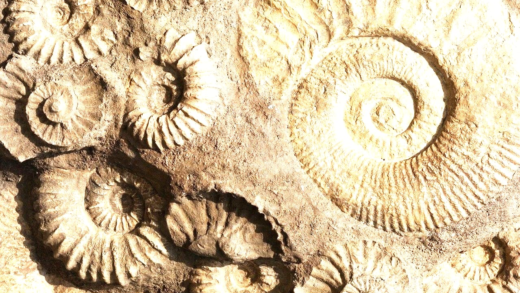The Mariana Trench is the deepest part of the world’s oceans, reaching approximately 36,000 feet. It hosts unique creatures like the giant squid and anglerfish, each with adaptations such as pressure resistance and bioluminescence, enabling survival in extreme conditions. Understanding these adaptations is crucial for appreciating the resilience of life in such depths.
Depth of the Mariana Trench
The Mariana Trench is the deepest part of the world’s oceans, reaching a staggering depth of approximately 36,000 feet (about 11,000 meters). This depth is so extreme that if Mount Everest were placed at the bottom of the trench, its peak would still be over a mile underwater. To put this into perspective, the Mariana Trench is deeper than the height of any mountain on Earth.
When we compare the depth of the Mariana Trench to other notable ocean locations, it becomes clear just how unique it is:
- Puerto Rico Trench: The second deepest trench, reaching around 27,000 feet.
- Java Trench: Also known as the Sunda Trench, it reaches about 25,000 feet.
- Philippine Trench: Approximately 34,000 feet deep.
The Mariana Trench is part of the Pacific Ocean and lies east of the Mariana Islands. It was formed by the process of subduction, where one tectonic plate is forced under another. This geological phenomenon not only contributes to the trench’s incredible depth but also plays a significant role in the overall dynamics of oceanic and terrestrial ecosystems.
The pressure at the bottom of the Mariana Trench is over 1,000 times greater than at sea level, which poses immense challenges for exploration and study. The extreme conditions make it difficult for scientists to gather data and understand the unique ecosystems that thrive in such depths.
In summary, the depth of the Mariana Trench is not just a number; it’s a testament to the Earth’s geological processes and a reminder of how much we still have to learn about our planet’s oceans. Its profound depths hold secrets that challenge our understanding of life and the environment.
Animals of the Mariana Trench
The Mariana Trench is home to a variety of fascinating creatures, each uniquely adapted to survive in one of the harshest environments on Earth. These animals not only showcase the incredible diversity of life but also highlight the amazing adaptations required to thrive in extreme depths.
Among the most notable residents of the Mariana Trench are:
- Giant Squid: Known for their elusive nature, giant squids can grow up to 43 feet long. Their large eyes help them see in the dark depths, while their ink provides a means of escape from predators.
- Anglerfish: With their bioluminescent lure, anglerfish attract unsuspecting prey in the darkness. Their unique adaptations allow them to survive the immense pressure and cold temperatures.
- Deep-Sea Jellyfish: These gelatinous creatures can be found floating in the trench. Their bodies are primarily water, which helps them withstand the crushing pressure of the deep ocean.
- Amphipods: Often referred to as “deep-sea shrimp,” amphipods have a tough exoskeleton that protects them from the extreme conditions. Some species, like the giant amphipod, can reach sizes of up to 12 inches.
These animals have developed unique features to deal with the trench’s challenges:
- Pressure Resistance: The pressure in the Mariana Trench can exceed 1,000 times that at sea level. Many of these animals have flexible bodies that can withstand such immense pressure without being crushed.
- Slow Metabolism: To survive in an environment where food is scarce, many trench-dwelling creatures have adapted by slowing their metabolism, allowing them to go longer periods without eating.
- Bioluminescence: Several species use bioluminescence for communication and attracting prey. This fascinating adaptation is crucial in the pitch-black depths of the trench.
In conclusion, the animals in the Mariana Trench represent a remarkable example of life’s resilience. Their unique adaptations not only enable them to thrive in extreme conditions but also contribute significantly to the understanding of biological diversity in our oceans. As research continues, we uncover more about these mysterious creatures and their roles in the ecosystem.
Survival Strategies of Mariana Trench Animals
Mariana Trench animals have developed remarkable adaptations that allow them to survive in one of the most extreme environments on Earth. The depth of the Mariana Trench brings about unique challenges, such as immense pressure, complete darkness, and scarce food resources. Here are some key adaptations that enable these creatures to thrive:
- Pressure Adaptation: The pressure at the bottom of the trench can reach over 1,000 times that of sea level. Many species, such as the giant squid and amphipods, have flexible bodies that can withstand these crushing forces without being crushed. Their cellular structures are adapted to maintain integrity under such conditions, showcasing a fascinating example of biological engineering.
- Bioluminescence: Many Mariana Trench residents, like the anglerfish, utilize bioluminescence to attract prey and communicate. This natural light source helps them navigate the pitch-black waters and lure unsuspecting creatures, making it a critical survival tool in the abyss.
- Slow Metabolism: Given the scarcity of food in the trench, many organisms have adapted by slowing down their metabolic rates. This allows them to survive longer periods without food, relying on energy reserves to navigate their harsh environment. For instance, some species of deep-sea jellyfish can go for extended durations without feeding.
- Specialized Feeding Mechanisms: Creatures such as deep-sea scavengers have developed unique feeding strategies to exploit the limited food supply. They often feed on organic matter that drifts down from the surface, such as dead fish or plankton, showcasing their role in the oceanic food web.
- Adaptive Reproductive Strategies: Many Mariana Trench animals have unique reproductive strategies to ensure the survival of their offspring in such hostile conditions. For instance, some species may produce fewer offspring but invest more energy in each one, increasing the chances of survival in a challenging environment.
In conclusion, the adaptations of animals in the Mariana Trench are a testament to the resilience of life. These unique features not only enable them to endure extreme conditions but also highlight the intricate balance of the ocean ecosystem. As scientists continue to explore these depths, they uncover more about the incredible ways life persists in the most inhospitable places on our planet.





Comments are closed.